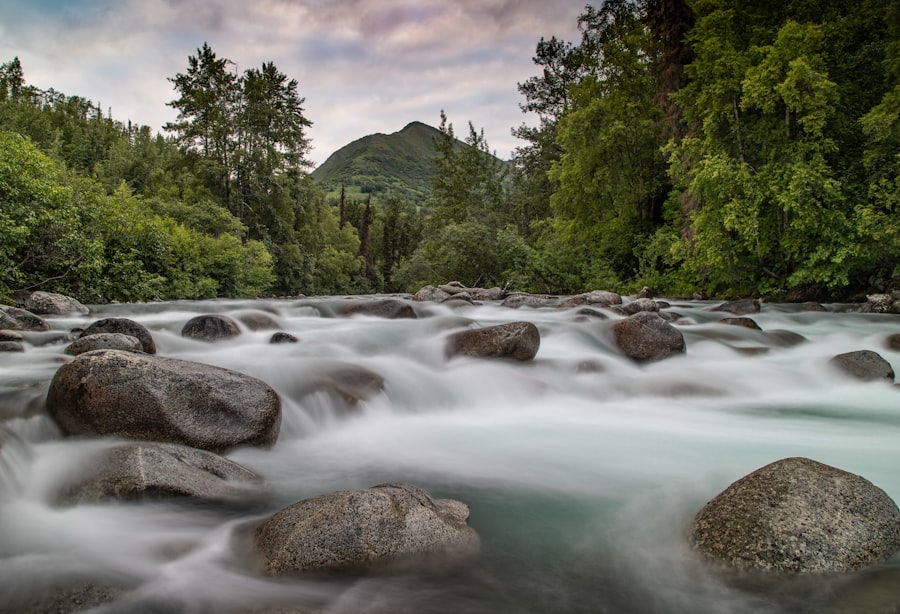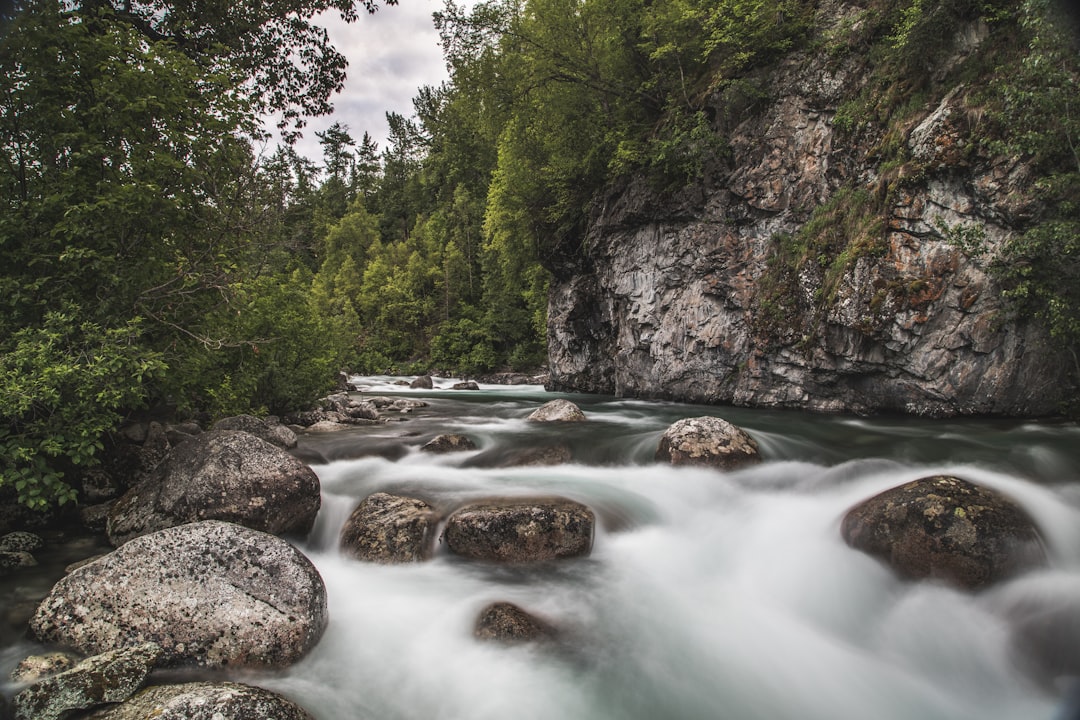The Arctic tundra, a biome characterized by its cold climate, short growing seasons, and unique ecological conditions, is home to a diverse array of plant life that has adapted to survive in one of the harshest environments on Earth. Spanning across the northern regions of North America, Europe, and Asia, the tundra is defined by its permafrost, a layer of permanently frozen soil that significantly influences the types of vegetation that can thrive there. Despite the extreme conditions, the tundra supports a variety of plant species, including mosses, lichens, low shrubs, and herbaceous plants.
These organisms play a crucial role in the ecosystem, providing food and habitat for numerous animal species while also contributing to the overall health of the environment. Understanding the characteristics and adaptations of Arctic tundra plants is essential for appreciating their resilience and ecological significance. The unique adaptations that these plants have developed over millennia allow them to withstand freezing temperatures, limited sunlight, and nutrient-poor soils.
As climate change continues to impact the Arctic region, it becomes increasingly important to study these plants not only for their intrinsic value but also for their role in broader ecological processes. This article delves into the various aspects of Arctic tundra plants, exploring their characteristics, adaptations, types, ecological importance, threats they face, conservation efforts, ongoing research, and future challenges.
Key Takeaways
- Arctic tundra plants are essential to the ecosystem and have unique adaptations to survive in extreme cold, short growing seasons, and permafrost.
- These plants play a crucial role in providing food and habitat for various wildlife species in the Arctic region.
- Threats to Arctic tundra plants include climate change, habitat destruction, and pollution, which can have detrimental effects on the entire ecosystem.
- Conservation efforts for Arctic tundra plants are focused on protecting their habitats, reducing human impact, and promoting sustainable practices in the region.
- Research and studies on Arctic tundra plants are ongoing to better understand their adaptations, ecological importance, and the potential impacts of climate change on their survival.
Characteristics of Arctic Tundra Plants
Arctic tundra plants exhibit several distinctive characteristics that enable them to thrive in an environment marked by extreme cold and limited resources. One of the most notable features is their low growth habit. Many tundra plants are small and close to the ground, which helps them avoid the harsh winds that can sweep across the landscape.
This low stature also allows them to take advantage of the warmth generated by the ground and snow cover, creating a microclimate that can be slightly more hospitable than the surrounding air. Another characteristic of Arctic tundra plants is their ability to photosynthesize efficiently under low light conditions. During the brief summer months, when sunlight is available for up to 24 hours a day, these plants capitalize on every moment of light to produce energy.
Their leaves are often dark green or reddish in color, which helps absorb more sunlight. Additionally, many tundra plants have thick cuticles and hairy surfaces that reduce water loss and protect against UV radiation. These adaptations are crucial for survival in an environment where water is often locked in ice or permafrost.
Adaptations of Arctic Tundra Plants to Extreme Cold

The extreme cold of the Arctic tundra presents significant challenges for plant life, necessitating a range of adaptations that allow these organisms to endure frigid temperatures. One primary adaptation is the development of antifreeze proteins within plant cells. These proteins lower the freezing point of cellular fluids, preventing ice crystals from forming inside cells and causing damage.
This biochemical adaptation is vital for survival during the long winter months when temperatures can plummet well below freezing. In addition to biochemical adaptations, many Arctic tundra plants have evolved physical traits that enhance their cold tolerance. For instance, some species possess specialized leaf structures that minimize heat loss.
These leaves may be small and thick or covered with fine hairs that trap air and create insulation. Furthermore, many tundra plants enter a state of dormancy during the coldest months, effectively pausing their metabolic processes until conditions improve. This ability to withstand prolonged periods of inactivity allows them to conserve energy and resources until the arrival of warmer weather.
Adaptations of Arctic Tundra Plants to Short Growing Seasons
The growing season in the Arctic tundra is notoriously brief, often lasting only a few weeks during the summer months when temperatures rise above freezing. To cope with this limited timeframe, tundra plants have developed several strategies that enable rapid growth and reproduction. One such strategy is the ability to germinate quickly once conditions become favorable.
Many seeds are adapted to respond to specific environmental cues, such as temperature or moisture levels, allowing them to sprout almost immediately after snowmelt. Additionally, Arctic tundra plants often exhibit a phenomenon known as “phenological plasticity,” which refers to their ability to adjust their growth patterns in response to environmental changes. For example, some species can accelerate their growth rates if temperatures rise earlier in the season or if there is an abundance of moisture available.
This flexibility allows them to maximize their reproductive output within the short growing season. Furthermore, many tundra plants produce flowers that are designed to attract pollinators quickly, ensuring successful reproduction before the onset of winter.
Adaptations of Arctic Tundra Plants to Permafrost
Permafrost presents a unique challenge for plant life in the Arctic tundra, as it restricts root growth and limits access to water and nutrients. To adapt to this condition, many tundra plants have developed shallow root systems that spread horizontally rather than penetrating deep into the soil. This adaptation allows them to access moisture from melting snow and rainwater while avoiding the frozen layers below.
Some species have also evolved specialized structures known as rhizomes or stolons—horizontal underground stems that enable vegetative reproduction. These structures allow plants to spread laterally across the surface of the permafrost, forming dense mats that can stabilize soil and prevent erosion. Additionally, certain tundra plants have developed symbiotic relationships with mycorrhizal fungi, which enhance nutrient uptake from the soil and improve overall plant health in nutrient-poor conditions.
Types of Arctic Tundra Plants

The diversity of plant life in the Arctic tundra is remarkable given its harsh conditions. Among the most common types are mosses and lichens, which play a foundational role in this ecosystem. Mosses are non-vascular plants that thrive in moist environments and can tolerate extreme cold; they often form dense carpets on the ground surface.
Lichens, which are symbiotic associations between fungi and algae or cyanobacteria, are incredibly resilient and can survive in some of the most inhospitable environments on Earth. In addition to mosses and lichens, various herbaceous plants and low shrubs are prevalent in the tundra landscape. Species such as Arctic willow (Salix arctica) and dwarf birch (Betula nana) are examples of low-growing shrubs that provide essential habitat for wildlife while also contributing to soil stabilization.
Herbaceous plants like fireweed (Chamerion angustifolium) and various species of saxifrage (Saxifraga spp.) add color and diversity to the tundra during the short summer months when they bloom.
Importance of Arctic Tundra Plants in the Ecosystem
Arctic tundra plants play a vital role in maintaining ecological balance within their environment. They serve as primary producers, converting sunlight into energy through photosynthesis and forming the base of the food web. Herbivores such as caribou and lemmings rely on these plants for sustenance during both summer and winter months when food sources are scarce.
The presence of diverse plant species also supports a variety of pollinators and other wildlife that depend on these organisms for food and habitat. Moreover, tundra plants contribute significantly to soil health and stability. Their root systems help anchor soil in place, preventing erosion caused by wind and water runoff.
Additionally, as these plants die and decompose, they enrich the soil with organic matter, enhancing nutrient availability for future generations of vegetation. This process is particularly important in nutrient-poor environments like the tundra, where soil fertility is often limited.
Threats to Arctic Tundra Plants
Despite their remarkable adaptations, Arctic tundra plants face numerous threats that jeopardize their survival and ecological integrity. Climate change is perhaps the most pressing issue; rising temperatures lead to thawing permafrost, altering hydrology patterns and affecting plant growth cycles. As permafrost thaws, it releases greenhouse gases such as carbon dioxide and methane into the atmosphere, further exacerbating climate change.
In addition to climate change, human activities pose significant risks to tundra ecosystems. Oil exploration and extraction can lead to habitat destruction and pollution, while increased tourism can result in trampling and disturbance of sensitive plant communities. Invasive species introduced through global trade or climate shifts can outcompete native flora for resources, further threatening biodiversity in these fragile ecosystems.
Conservation Efforts for Arctic Tundra Plants
Recognizing the importance of preserving Arctic tundra ecosystems has led to various conservation efforts aimed at protecting these unique plant communities. Establishing protected areas such as national parks and wildlife reserves helps safeguard critical habitats from development and exploitation. These protected areas serve as refuges for native plant species while also providing opportunities for research and education about tundra ecosystems.
In addition to creating protected areas, conservation initiatives often focus on restoring degraded habitats through replanting native species and controlling invasive species populations. Collaborative efforts involving local communities, indigenous groups, scientists, and policymakers are essential for developing effective conservation strategies that consider both ecological integrity and cultural values associated with these landscapes.
Research and Studies on Arctic Tundra Plants
Ongoing research into Arctic tundra plants is crucial for understanding their ecology and responses to environmental changes. Scientists employ various methods ranging from field studies to remote sensing technologies to monitor plant health and distribution patterns over time. Long-term ecological research sites have been established across the Arctic region to gather data on plant phenology, growth rates, and interactions with other organisms.
Recent studies have also focused on understanding how climate change impacts plant communities at both local and global scales. Researchers investigate shifts in species distributions due to warming temperatures or altered precipitation patterns while examining how these changes affect ecosystem functions such as carbon storage or nutrient cycling. This research not only enhances our knowledge of tundra ecosystems but also informs conservation strategies aimed at mitigating potential impacts from climate change.
Future Challenges and Opportunities for Arctic Tundra Plants
As climate change continues to reshape the Arctic landscape, future challenges for tundra plants will likely intensify. Increased temperatures may lead to shifts in species composition as some native plants struggle to adapt while others may thrive under new conditions. The potential for invasive species introduction poses an additional threat; as warmer temperatures create more favorable conditions for non-native flora, they could outcompete native species for resources.
However, these challenges also present opportunities for research and innovation in conservation practices. Understanding how Arctic tundra plants respond to changing conditions can inform adaptive management strategies aimed at preserving biodiversity while promoting ecosystem resilience. Engaging local communities in conservation efforts fosters stewardship over these fragile ecosystems while ensuring that traditional knowledge informs contemporary practices.
In conclusion, while Arctic tundra plants face significant threats from climate change and human activities, ongoing research efforts provide valuable insights into their resilience and adaptability. By prioritizing conservation initiatives that protect these unique ecosystems, we can work towards safeguarding not only the plants themselves but also the intricate web of life they support within one of Earth’s most remarkable biomes.
If you are interested in learning more about plant adaptations, you may want to check out this article on <a href='https://chikusgarden.com/worm-castings/’>worm castings. Worm castings are a natural fertilizer that can help plants thrive in various environments, including the harsh conditions of the Arctic tundra. By understanding how plants can benefit from nutrient-rich soil amendments like worm castings, we can appreciate the resilience and adaptability of Arctic tundra plants even more.
FAQs
What are Arctic tundra plants?
Arctic tundra plants are small, hardy vegetation that grow in the cold, harsh conditions of the Arctic tundra biome. These plants have adapted to survive in low temperatures, strong winds, and permafrost.
What are some common Arctic tundra plants?
Common Arctic tundra plants include mosses, lichens, grasses, sedges, and dwarf shrubs such as Arctic willow, Arctic poppy, and Arctic bell heather.
What are some adaptations of Arctic tundra plants?
Arctic tundra plants have several adaptations to survive in their extreme environment, including shallow root systems to access nutrients in the thin soil, small leaves to minimize water loss, and the ability to photosynthesize at low temperatures and in low light conditions.
How do Arctic tundra plants reproduce?
Arctic tundra plants reproduce through a variety of methods, including seed dispersal by wind, water, or animals, as well as vegetative reproduction through rhizomes or stolons.
What role do Arctic tundra plants play in the ecosystem?
Arctic tundra plants play a crucial role in the ecosystem by providing food and habitat for a variety of animals, stabilizing the soil, and contributing to the global carbon cycle through photosynthesis and carbon storage in the permafrost.

